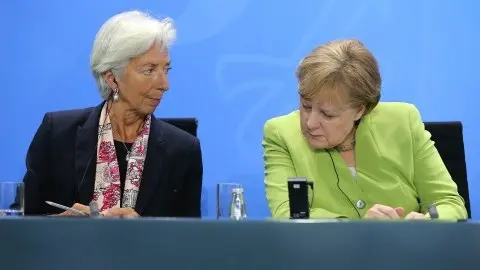Brexit: Why 2020 could be just as uncertain as 2019
The Brexit outlook looks very uncertain, regardless of who wins the unpredictable general election in December. Under a Conservative majority, fears will grow about the length of the transition period. Initial optimism about a second referendum under a Labour government could be tempered as several logistical hurdles come to the fore
UK elections:Unpredictable is the word
UK voters will head to the polls on 12 December in what promises to be a highly unpredictable general election. Prime ministers Boris Johnson hopes that if he can secure a majority in parliament, he’ll have an easier time of ratifying his deal in January, enabling the UK to leave the EU in January.
The good news for him is that the Conservatives are comfortably ahead in the polls, despite missing his “do or die” 31 October deadline. In fact, while a recent poll for The Times found that 57% of leave voters were left disappointed by that, 63% of them think the missed deadline wasn’t Johnson’s fault "at all" (according to a separate YouGov poll).
But there are undoubtedly risks for Mr Johnson – not least in Scotland and parts of Southern England, where the Conservatives are vulnerable to a surge in support for pro-remain parties. There is also plenty of uncertainty over how the Conservatives will fare in ‘Labour Leave’ seats – a lot will depend on whether opposition parties can shift the narrative away from Brexit and back towards domestic issues.
Transition period length clouded by uncertainty
Even if the Conservatives win, the size of their majority will matter. That’s because if the deal is swiftly ratified, focus among businesses and markets will quickly turn to the transition period. This standstill phase, where the UK’s EU trading relationship will remain virtually unchanged, currently expires in December 2020. That will almost certainly need extending – it’s unlikely to be long enough to negotiate a new free trade arrangement, nor set up the associated border infrastructure to keep trade moving.
The EU is open to an extension to 2022, but the UK will need to sign up to EU budget payments beyond 2020 – a steep political price for PM Johnson. Negotiations will undoubtedly be messy, and time will be short – the EU wants it wrapped up by the end of June.
We suspect an extension is ultimately inevitable, although this will undoubtedly infuriate hardline pro-Brexit Conservative MPs. However, with a sizeable majority, PM Johnson may judge this a manageable risk.
Things look a little more uncertain if the Conservatives only win the election by a very narrow majority. PM Johnson will be under heavy pressure not to commit to EU budget payments, and in the meantime that will create an uncertain backdrop for firms. If the transition period is not extended by the EU's June deadline, then there is a risk that the UK (excluding Northern Ireland) could abruptly leave the single market and customs union at the end of 2020 – a scenario not dissimilar from ‘no deal’ for many firms.
Seven scenarios for Brexit after the UK election
Labour minority government could be on the cards
What happens if the Conservatives fail to get a majority? Well, it all depends on the numbers, but there is no guarantee Johnson will be able to re-secure the support of the Democratic Unionist Party (DUP). If he can, then that will almost certainly come with the cost of renegotiating his Brexit deal. But after three-years of impasse, we doubt fresh talks would yield any more success.
If the Conservatives fail to form a government, then Labour, who have a wider pool of potential Westminster partners, will try to build a working majority themselves. Other opposition parties are very reluctant to enter a formal coalition with Labour leader Jeremy Corbyn - wary perhaps it might not be long before we get another election.
However, most expect some kind of informal agreement, at the heart of which will be a commitment to holding a second Brexit referendum. That would initially be good news for financial markets, particularly given that Labour's informal Westminster parties are unlikely to sign-up to its bolder economic policy pledges.
Just how straight forward is a second referendum?
But that initial optimism could be tempered slightly as the logistical hurdles associated with organising a second referendum come to the fore. This is particularly true if Labour's working majority relies on a number of Westminster parties, and is therefore vulnerable to any one of them pulling the plug on the government. This raises a number of potential challenges:
- A second referendum would most likely take at least six months to arrange, requiring an Article 50 extension beyond June. That would presumably require the government to quickly reach a deal on paying into the EU budget beyond 2020.
- What Brexit deal will go on the ballot paper? Labour has said it will renegotiate with the EU, presumably at least to include future customs union access. But will all of Labour’s Westminster partners be happy with this? Don’t forget virtually all of these parties will be vocally supporting remain, creating unusual negotiating incentives
- If Labour is reliant on the Scottish National Party (SNP) for its working majority, then Corbyn will be under heavy pressure to allow another Scottish independence referendum. The SNP will likely insist this happens before a second Brexit referendum, but Labour will push hard for it to come later, in the hope that a softer Brexit or 'remain' outcome will see independence support dissipate.
- If the public backs leaving with a deal in a second referendum, Labour could feasibly lose the support of many opposition parties and that could easily trigger another general election. That would leave the victor to implement the public's Brexit verdict.
A very uncertain 2020
Of course, there is a nightmare scenario for markets whereby neither Labour nor the Conservatives manage to form a government. In the short-term, that will lead to fears about the Article 50 period and whether anyone will step in to ask for another extension. Either way, all roads probably lead to another election in this scenario.
Whatever happens in this election, the outlook for 2020 holds plenty of uncertainty. That means that investment is likely to remain constrained, even if the deal is ratified in January. We're pencilling in around 1% growth for 2020, and that probably means the Bank of England will keep interest rates on hold for the foreseeable future.
Download
Download article
8 November 2019
November Economic Update: Trading the positives This bundle contains 9 ArticlesThis publication has been prepared by ING solely for information purposes irrespective of a particular user's means, financial situation or investment objectives. The information does not constitute investment recommendation, and nor is it investment, legal or tax advice or an offer or solicitation to purchase or sell any financial instrument. Read more
